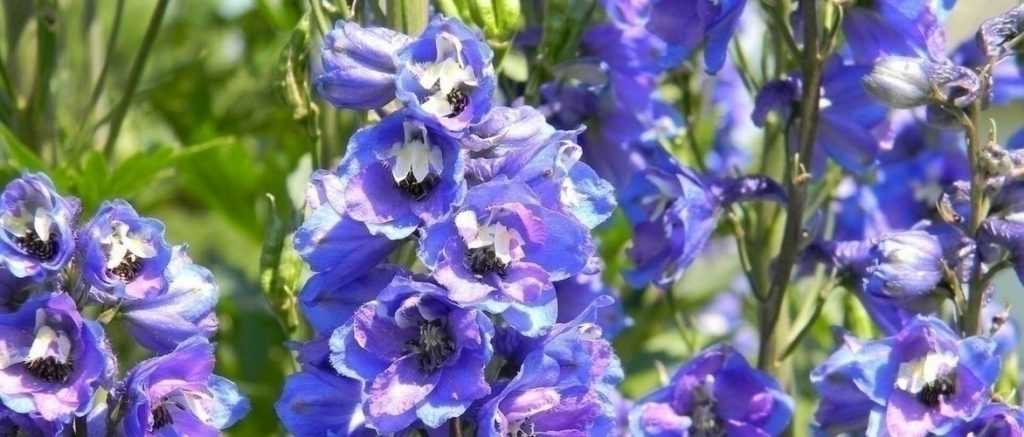
Delphiniums, Larkspur: Planting, Sowing and Care
Contents
Delphiniums in a nutshell
- They are among the most structural perennial plants
- Their flowering lasts over a month
- Their flowers offer rather rare shades of blue
- They need sunshine to thrive
- Icons of English gardens and cottage gardens, they are spectacular!
Our expert's word
Delphiniums, often called larkspurs or dauphinelles, are iconic in English gardens. They are highly valued for structuring meadow-style gardens and are excellent for introducing vertical accents and focal points at the back of borders, along edges, or in pots near the house.
Majestic yet delicate, their long flower spikes, sometimes reaching nearly 2 metres, come in branched or dense clusters, with pure blues, purples, whites, yellows, pinks, or reds depending on the variety. They thrive in full sun, blooming from June to October (depending on the cultivar), in rich, deep, well-drained soil.
These elegant perennials aren’t the easiest to grow and maintain: somewhat finicky, they often take one to three years to establish properly. But once settled, they produce a beautiful clump of dozens of flower spikes by late spring, requiring only minimal care to bloom generously again by late summer.
When cut, their majestic inflorescences make lovely, rustic-style bouquets.
Delphiniums are perfect plants for playing with contrasts, shades, and gradients, transforming a flowerbed into a striking Impressionist tableau. They pair beautifully in opulent spring and summer displays with perennials and old-fashioned roses, among others. They bring charm to English cottages and elevate a simple perennial border into a so-chic mixed border!
Botany
Botanical data
- Latin name Delphiniums
- Family Ranunculaceae
- Common name Larkspur, Delphinium
- Flowering June to October
- Height up to 2 metres
- Exposure Full sun
- Soil type All types
- Hardiness Beyond -15°C
The genus Delphinium, commonly known as Larkspur (belonging to the Ranunculaceae family), comprises nearly 400 species. Most are perennials, with a few annuals and biennials. Delphiniums derive their name from their flower buds, which feature a long spur resembling a dolphin’s rostrum. These hardy herbaceous plants are primarily native to temperate regions of the Northern Hemisphere. Delphiniums thrive throughout France, except in very windy areas.
There are hundreds of larkspur varieties, most being perennials, with some annuals and biennials. Different delphinium cultivars are divided into several groups. The most commonly cultivated include Delphinium grandiflorum, the giant delphiniums of the Elatum group (reaching up to 2m at maturity), the Pacific hybrids, and the robust, loosely branched varieties of the Belladonna group. Elatum group cultivars and their hybrids are the most common in gardens. The main selection criteria are flower colour and height, offering great diversity.
Delphiniums have an upright, bushy habit, forming graceful clumps 20-60cm wide depending on species and age. Most larkspurs have fibrous or fleshy roots, sometimes tuberous. Be patient – it takes a few years for them to form beautiful clumps. Once established, divide them every 3-4 years to maintain vigour (plants weaken with age) and ensure magnificent blooms. While Delphiniums are perfectly hardy, perennial species can be short-lived (especially Pacific hybrids), typically lasting about ten years: division helps regenerate and preserve them long-term.
These prolific perennials always make a striking garden display: their majestic flowers bloom for several weeks from June to August (depending on variety), sometimes reblooming in October if cut back after flowering. The flower spikes stand erect, varying greatly in height from a few centimetres to over 2m.
Depending on species, the spikes may be densely packed or more relaxed, bearing numerous delicate flowers 2-9cm in diameter – cup-shaped, single or double, spurred, sometimes hooded like an elf’s cap.
The Delphinium flower’s shape depends mainly on the size and colour of its five large sepals; the true petals are much smaller, forming a central “eye” called a bee or mouche. The many species and varieties offer a wide colour range, from pastels to vibrant hues, though blue predominates. From sky blue to cyan, lavender to purple, lilac to mauve, delphiniums include some of the garden’s most beautiful blue flowers. White, yellow, pink and red varieties complete the palette.
Some criticise delphiniums for their brief June flowering (just 15 days for Elatum group plants), but encouraging rebloom is easy: cut spent spikes back to the foliage and regularly remove faded flowers – guaranteed September rebloom! Nature provides secondary spikes below the main one, extending flowering by two weeks.
While delphinium flowers aren’t fragrant, they’re highly nectar-rich, attracting butterflies, pollinators and other beneficial insects.
Delphiniums make excellent cut flowers. Harvested when three-quarters open, spikes last about two weeks in vases. Dried upside down, they create charming rustic dried arrangements.
The medium-green leaves, 10-20cm long, are toothed and deeply divided into 3-7 lobes, sometimes slightly hairy. They reduce in size up the stem. Deciduous, they disappear in winter. In spring, young shoots are slug magnets – protect them from devastating snail and slug damage.
Moderately demanding, delphiniums prefer fertile, deep, humus-rich, moist but well-drained soil. They dislike both heavy, wet soils and dry, poor ones. They thrive in sunny, sheltered spots, protected from strong winds and winter wetness. Except dwarf varieties, delphiniums – especially tall types – require staking in windy sites: their long flower stems snap like glass and break under the weight of blooms in gusts.
Delphiniums suit all garden styles, equally dazzling as back-of-border plants or in beds and containers, whether sophisticated or subtle. Their verticality structures both formal beds and wilder prairie-style plantings. Stalwarts of herbaceous borders and cottage gardens, they’re prized for majestic spikes of white, pink or (most commonly) blue flowers. The tall, structural Pacific Giant group are English garden classics. Others blend beautifully into naturalistic plantings with Oriental poppies, cornflowers and daisies for exuberant (if fleeting) displays. They’re essentials for sunny gardens and, naturally, blue-themed borders. Typically flowering alongside roses in late spring/early summer, they’re perfect partners for old-fashioned roses.
All plant parts are toxic, and leaf contact may irritate skin.
Species and main varieties
The different delphinium cultivars are divided into several groups:
The Belladonna Group
With a slightly wild appearance, these are excellent garden delphiniums with simple, delicate flowers in blue, white or purple, 2 to 4 cm in diameter, making them ideal plants for informal flower beds. These perennials with large, finely divided palmate leaves produce abundant blooms from June-July and again from August to October. Stiff stems, 0.80 to 1.40 m tall, bear branched, slender and loose spikes, also perfect for rustic bouquets. The delphiniums in this group, being shorter, are less affected by wind, more resilient and have greater longevity than the taller varieties.
The Elatum Group
This is the catch-all name for traditional border delphiniums. They are the most common in gardens, but also the tallest, classified by height: up to 1.50 m, up to 1.70 m and up to 2 m or more. Their form differs from the Belladonna: these hybrids have a more compact inflorescence. The thick, rigid stems end in magnificent dense spikes with large, tightly packed single, double or semi-double flowers in blue, violet, white or old rose, appearing from June to August, sometimes again in October. Most perennial delphiniums descend from this group. The numerous cultivars and hybrids in this group are classified as follows:
- The Pacific Hybrids series
The famous Pacific Giants series, rich in pure colours or brightened with white markings, on single or semi-double flowers. The Pacifics are recent hybrids, remarkable for their inflorescences measuring 1m to 1.20 m long on numerous stems of 1.80 to 2 m. Originating in California, they share the same characteristics as the Elatum group, but being seed-grown, they show more colour variation. The large (5 to 7 cm diameter), semi-double flowers form beautiful dense spikes from June to August, stunning as cut flowers.
- The Magic Fountains series
This is the dwarf version of the Pacific Hybrids series. Reproducible by seed, it produces clusters of 30 to 50 cm in pure blue, mauve, pink, white etc. from June. The Magic Fountains series offers more compact delphiniums.
Delphinium grandiflorum or D. chinense
Often grown as an annual, this bushy dwarf plant reaches 50 cm tall and bears light panicles of pretty single flowers in the shape of elf caps in blue, violet or white from June-July.
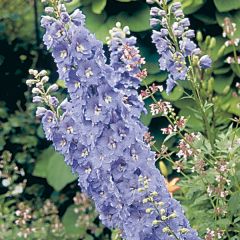
Delphinium Guinevere Group - Larkspur
- Flowering time July to October
- Height at maturity 1,80 m
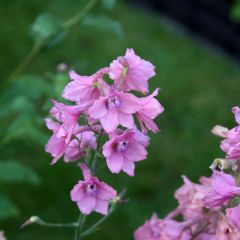
Delphinium Pink Sensation - Larkspur
- Flowering time July to September
- Height at maturity 80 cm

Delphinium King Arthur - Larkspur
- Flowering time July to October
- Height at maturity 1,80 m
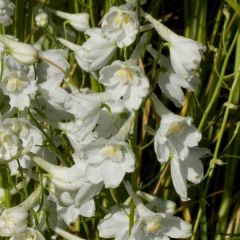
Delphinium Casa Blanca - Larkspur
- Flowering time July to October
- Height at maturity 1,20 m
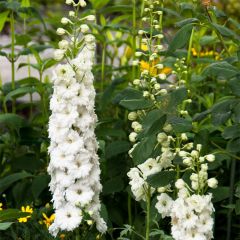
Delphinium elatum Double Innocence - Larkspur
- Flowering time July, August
- Height at maturity 1,50 m
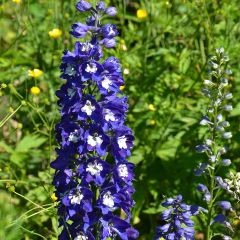
Delphinium Groupe Pacific-hybrid Blue Bird - Larkspur
- Flowering time July to October
- Height at maturity 1,80 m

Delphinium belladonna Bellamosum - Larkspur
- Flowering time July to November
- Height at maturity 1,20 m
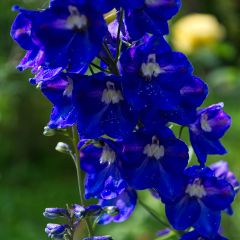
Delphinium Völkerfrieden - Larkspur
- Flowering time July to October
- Height at maturity 2 m
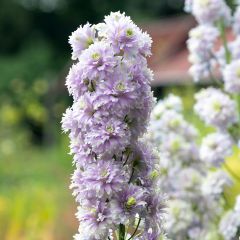
Delphinium Crystal Delight - Larkspur
- Flowering time August to October
- Height at maturity 1,20 m
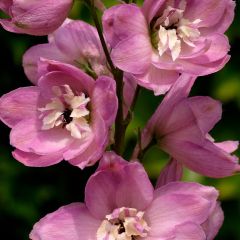
Delphinium Astolat Group - Larkspur
- Flowering time July to October
- Height at maturity 1,50 m
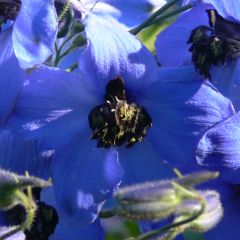
Delphinium Finsteraarhorn - Larkspur
- Flowering time July to October
- Height at maturity 1,80 m
Discover other Delphinium - Larkspur
Planting
Where to Plant Delphiniums?
Delphiniums thrive almost everywhere in France, except in very windy regions and in dry, poor, or heavy soil.
Delphiniums are not the easiest plants to grow—despite their appearance as large, easy-going perennials, they are actually quite demanding. They prefer a sunny location, sheltered from strong winds and well-exposed, which encourages the plant to reach its full height.
They suit all types of settings, from flower beds to borders, but they truly shine as background plants in mixed borders. The tallest varieties should be planted at the back of borders, where they add striking height and vertical interest.
They love fertile, deep, cool, and very well-drained soil, even in summer. In poor soil, they will never be lush. In heavy, wet soil, they will struggle, grow slowly, or even die. If you still want to try, adding sand and gravel at planting time will help the delphinium establish itself.
Requirements vary greatly between species: Elatum hybrids are more tolerant of soil type, but all retain a good level of hardiness from their mountain origins. The harsher the winter, the more beautiful the delphinium—it can withstand temperatures below -15°C but dislikes winter wet. Ensure it is planted in a well-drained spot, free from excess moisture in winter. In summer, however, water generously during dry spells.
A very windy location can be a threat to these tall perennials. Except for dwarf varieties, delphiniums require staking to prevent stems from breaking at the slightest breeze—a strong gust, and your border will look like a battlefield after a storm! Install supports before April or when plants reach 30 cm in height.
There’s no point trying to grow them in dry or heavy soil, in shade, or in very windy regions—you’ll be disappointed. We recommend planting them where they will look their best: in full sun, sheltered from wind, and in well-drained soil. Keep in mind that if planted in unfavourable conditions, they will need extra care.
Container growing is not ideal for these plants, which prefer cool, deep soil, but it is possible with a few precautions. More so than in the ground, potted delphiniums need fertiliser and sun. Dwarf Elatum varieties or the striking Delphinium grandiflorum will thrive in a sunny spot (at least 5 hours of sun per day) in a container at least 30 cm deep, filled with compost-enriched soil or well-rotted manure, watered regularly, and staked.
When to Plant?
Ideally in autumn or spring (March–April) after the last frosts, in fertile, well-drained soil.
How to Plant?
- Plant in a sunny spot, in deep, cool, non-chalky, rich, and well-drained soil.
- If your soil is heavy and compact, add compost and blonde peat at planting time. Ideally, incorporate well-rotted manure long before planting or use a natural organic fertiliser.
- Plant pot-grown specimens in groups of 3–5 per m², spaced 40–75 cm apart depending on the variety. For a striking effect in borders, plant in larger numbers.
- Leave at least two or three shoots on young plants and five to seven on well-established delphiniums.
- Since foliage dies back in winter, mark the plant’s location with a small stake to monitor slugs and snails in spring.
- During growth, water once or twice a week and apply a liquid fertiliser every two to three weeks. In subsequent years, fertilise in spring to maintain soil fertility, along with humus and compost to retain moisture.
To learn more about planting delphiniums, check out our planting guide: “Planting and Growing Delphiniums Successfully”
Maintenance and Pruning
- Stake the stems of tall varieties firmly in spring, as soon as growth begins.
- To ensure vigorous growth, cut back all weak shoots at the base in April.
- Remove flower heads promptly after blooming to encourage a second autumn flowering. For annual varieties, allow them to self-seed for natural propagation. If you wish to collect seeds, leave one flower spike per plant (over 2 years old).
- After flowering, cut back spent flower stems by half (this will prevent the plant from becoming exhausted) and train morning glories to climb them, for example.
- Cut them back to ground level preferably in spring, at the start of the growing season, to prevent water and moisture from entering the hollow stems during winter, which could cause clumps to rot.
- Keep the soil moist. Apply mulch and water regularly.
Plants lose vigour as they age and often disappear quickly (typically within three years). After 5 years, flowering becomes sparse. Don’t hesitate to replace or divide the plants if you wish to maintain their vitality.
Diseases and potential pests
Delphiniums have well-known enemies:
- Snails and slugs that devour young shoots before they even emerge from the ground in spring. A slug treatment, applied at planting time and then every year from February onwards, is essential.
- Downy mildew and powdery mildew. Spray preventatively with Bordeaux mixture, sulphur as well as nettle and horsetail manure. Do not leave any diseased plant residues on the ground, burn them.
Multiplication
Sowing
- Seeds can be harvested and sown as soon as they mature in summer, provided you haven’t cut all the flower spikes. Otherwise, purchase them in packets. Annual species usually self-seed and don’t tolerate transplanting well, which is why they are best sown directly in place in spring. The secret to delphinium germination is coolness. Delphinium seeds have high germination rates during the first year after harvest.
- Store them in the refrigerator and sow them preferably in spring on moist compost, barely covering them with soil kept damp at a constant temperature between 18 and 22°C. Germination takes one to four weeks.
- Transplant the seedlings as soon as the first leaves appear. Sowings made in February-March will flower from August to October the following year. In subsequent years, they will flower earlier and produce taller, more floriferous spikes.
Spring sowings flower between July and September and typically don’t exceed 60 to 90 cm in the first year. The following year, flowering shifts to May-June, and the plant reaches 1.30 m. Seedlings rarely produce plants identical to the parent.
Sowing delphiniums successfully is straightforward, but the resulting colour will be unpredictable. In contrast, division and cuttings guarantee robust plants with consistent colours.
→ Learn more in our tutorial on sowing Delphiniums!
Division
Division applies to perennial species. Delphiniums have a relatively short lifespan of around 4 years, by which time they form a nice clump. Once well-established, they should be divided every 3 to 4 years to ensure longevity and maintain beautiful blooms. “Divide to preserve” – that’s the rule for these fleeting perennials!
In late winter or summer during dormancy, dig up the plant and use secateurs or a spade to divide it into sections, each with roots and shoots. Replant the outer sections immediately.
Cuttings
The best border delphiniums are propagated by cuttings. Take cuttings in March or April when growth begins, as this is the easiest time. Like division, cuttings produce exact replicas of the parent plant. Use shoots taken from 3- or 4-year-old plants. When the clump reaches 15–20 cm in height, take 7–10 cm young shoots from the base near the crown. Plant them in a light, well-draining mix (sand, vermiculite, peat, etc.) at 15–20°C. Rooting takes four to five weeks. When new leaves appear, the cuttings are ready for transplanting outdoors.
Allow the shoots to develop; you’ll get beautiful flowers from August to October. Stake young plants to prevent stems from breaking.
→ Learn more with Virginie’s tutorial: How to take Delphinium cuttings?
Pair
Delphiniums are very easy to pair. Stalwarts of herbaceous borders and cottage gardens, they are cherished for their majestic spikes of flowers in white, pink, but most often blue. The tall, highly structural silhouettes of the ‘Pacific Giant’ group are quintessential classics of English gardens. Delphiniums from the Belladonna group, less compact, shorter (1.20 m), more branched and graceful, blend wonderfully into natural gardens alongside Oriental poppies, cornflowers, and daisies to create an exuberant yet ephemeral pairing. They are essential for sunny gardens and, of course, blue-themed gardens.
Blue/gold, purple/lavender or creamy yellow/soft orange, delphiniums are perfect plants for playing with contrasts, shades, and gradients, transforming a flowerbed into a remarkable impressionist tableau.
Delphiniums generally bloom during the rose season, in late spring and early summer, making them excellent partners for old-fashioned roses, with which they create charming and romantic scenes. You can also compose another beautiful combination with soft orange daylilies, Gypsophila ‘Rosenschleier’, or sea kale.
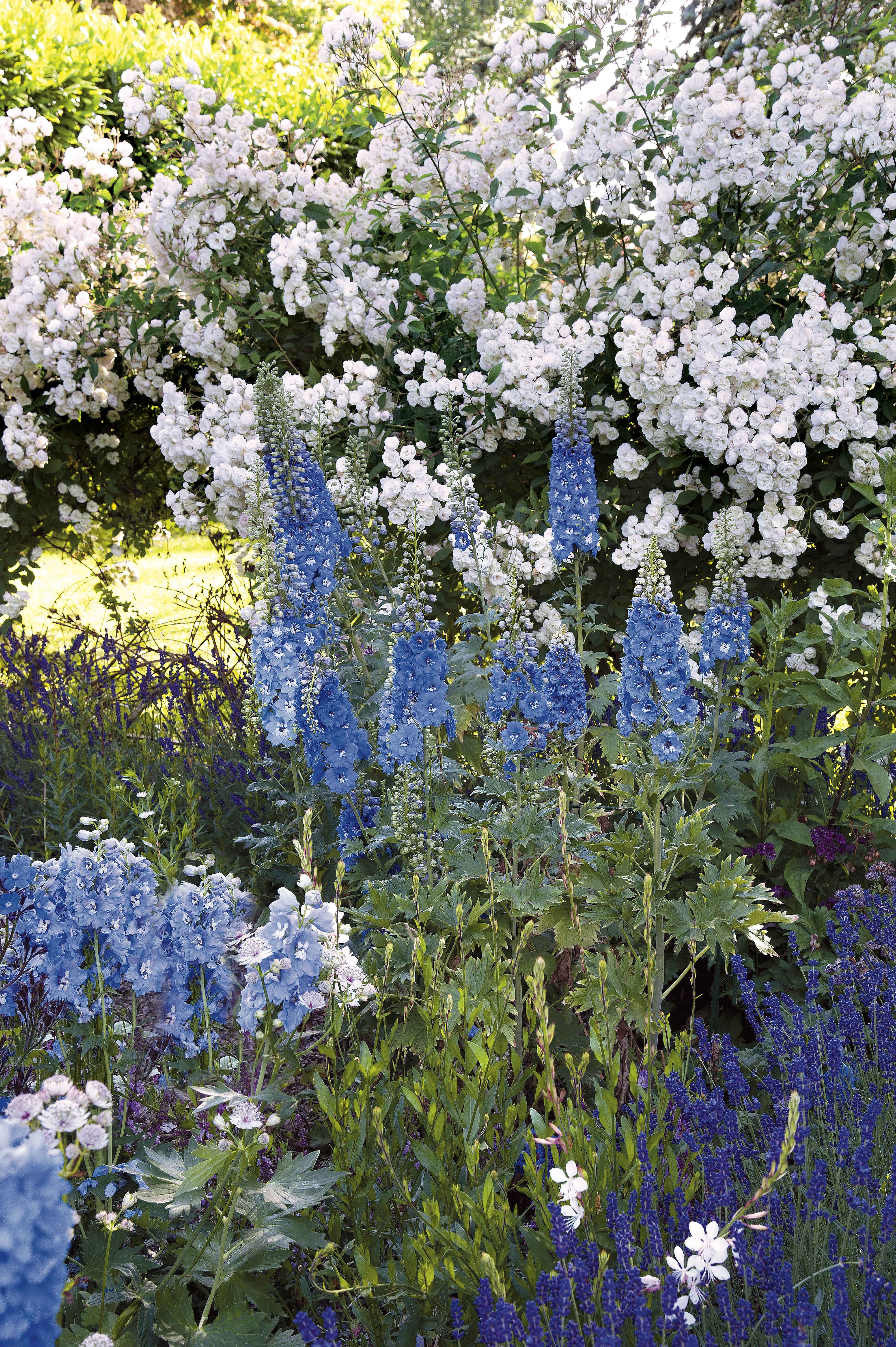
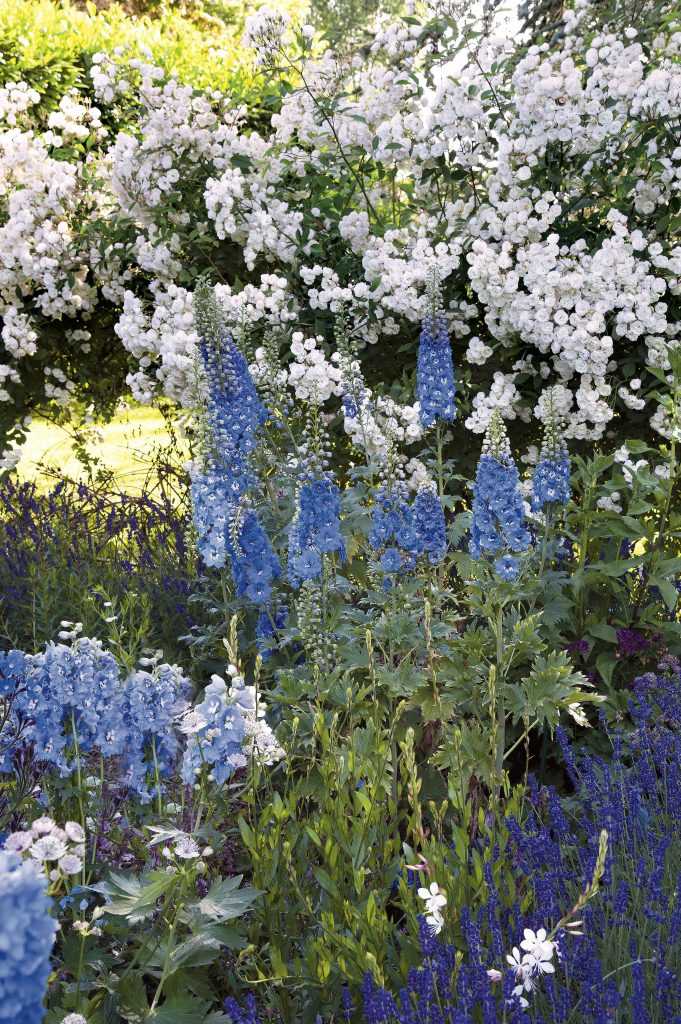
Roses ‘Blushing Bride’ – Lavandula angustifolia – Delphinium New Millenium ‘Royal Aspirations’ and ‘Sunny Skies’ – Astrantia major
Discover even more pairing ideas in our advice sheet: “Delphinium, Larkspur – 8 Ideas for Pairing”
Useful resources
- We offer you one of the most beautiful delphinium collections
- Our advice sheet: Planting and growing delphiniums successfully
- Discover our tips for growing delphiniums in pots for magnificent blooms
Frequently asked questions
-
My delphinium isn't growing well and looks stunted. What should I do?
Please wait, this is perfectly normal. Plants don't all grow at the same rate, and your delphinium may simply need a bit more time to establish its roots. Plants planted in spring often remain rather small during their first year: a good application of fertiliser or well-rotted compost will help them get started. Be patient, and you'll be rewarded the following year with an explosion of flowers.
-
Planted in spring, my delphinium has almost disappeared, why?
It is very likely that it has suffered an attack from slugs or snails. Gastropods are particularly fond of young delphinium shoots and hardly give them time to emerge from the soil. Be vigilant: mark your young plants with a small stake to monitor snails and slugs in spring. A slug repellent, applied at planting time and then every year from March onwards before vegetation starts, helps anticipate attacks and is enough to limit damage.
-
My delphiniums break very easily, what should I do?
They need staking just before flowering: a heavy downpour, a gust of wind, and their stems snap like glass under the weight of the blooms.
-
I've failed with my delphinium seedlings, why?
It is possible that your seeds were stored incorrectly or for too long: delphinium seeds have a high germination rate during the first year after harvest. They should be kept in the refrigerator and then sown in warmth, preferably in spring, on moist compost, barely covering them with compost kept moist at a constant temperature between 18 and 22°C. Germination takes one to four weeks. Once the young plants are well developed (with 3 mature leaves) after about four weeks, they should be transplanted to their final position in full sun, in very deep, well-manured soil that remains cool, and all that remains is to stake them.
- Subscribe!
- Contents



































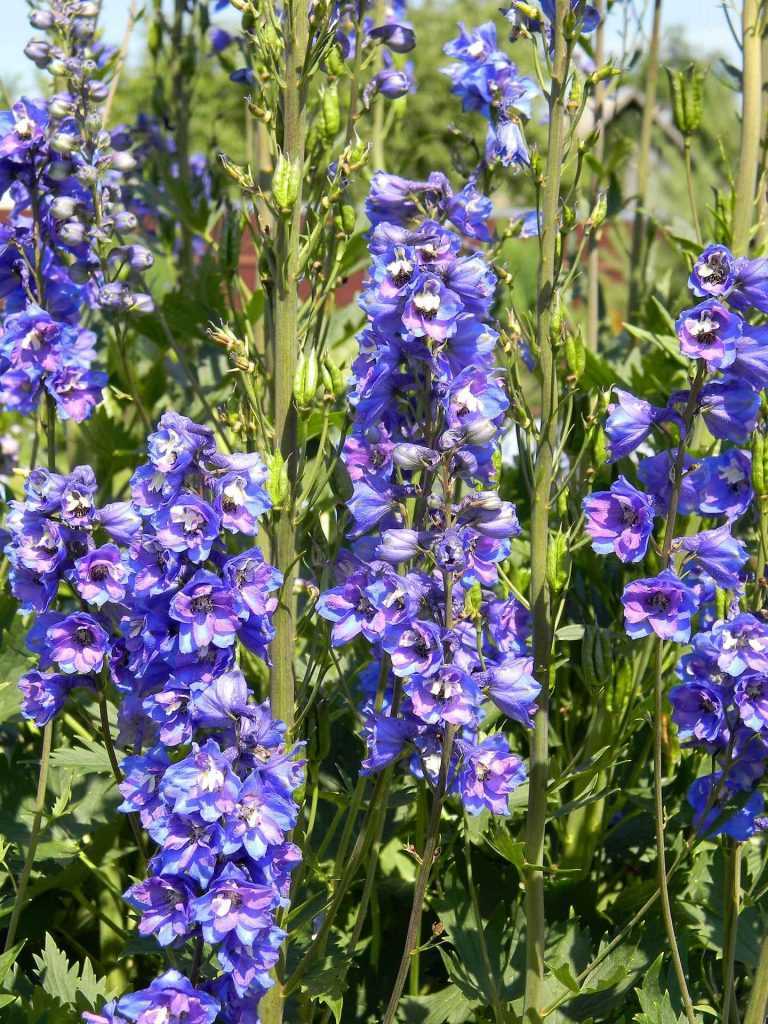
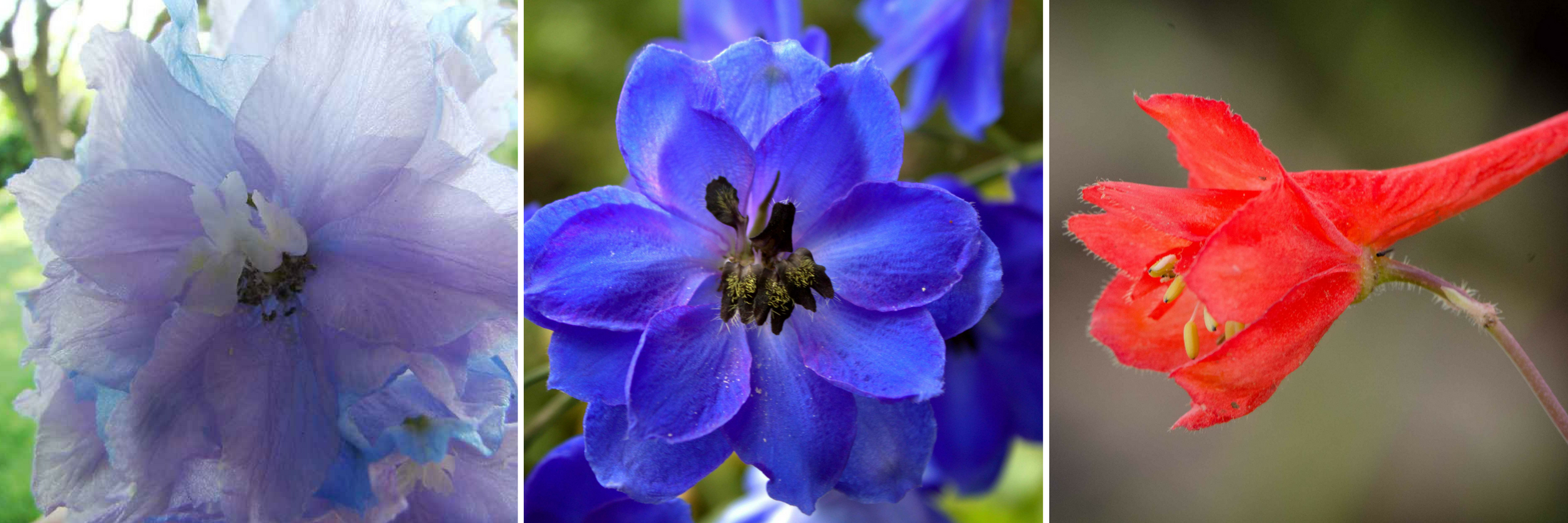

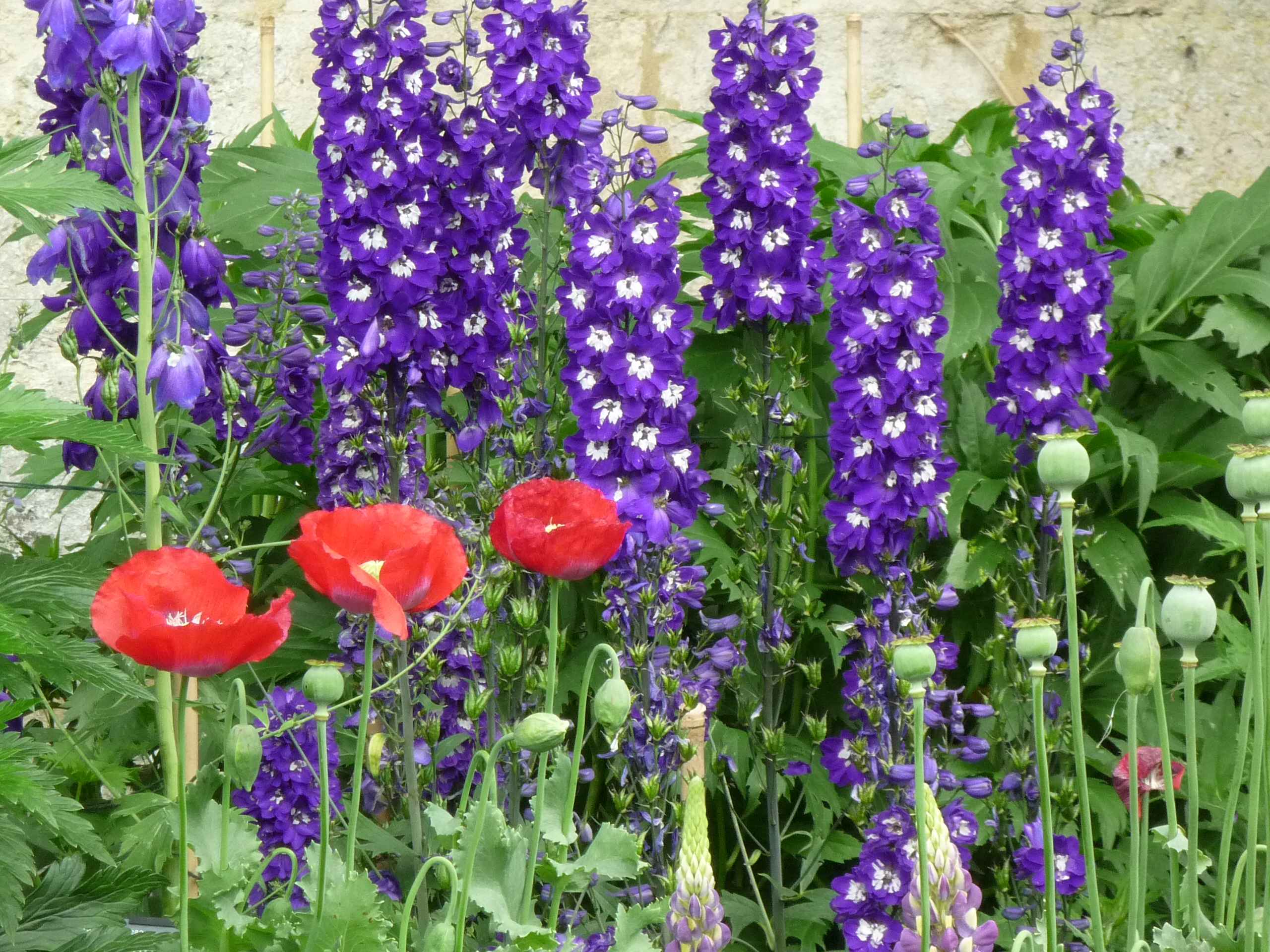
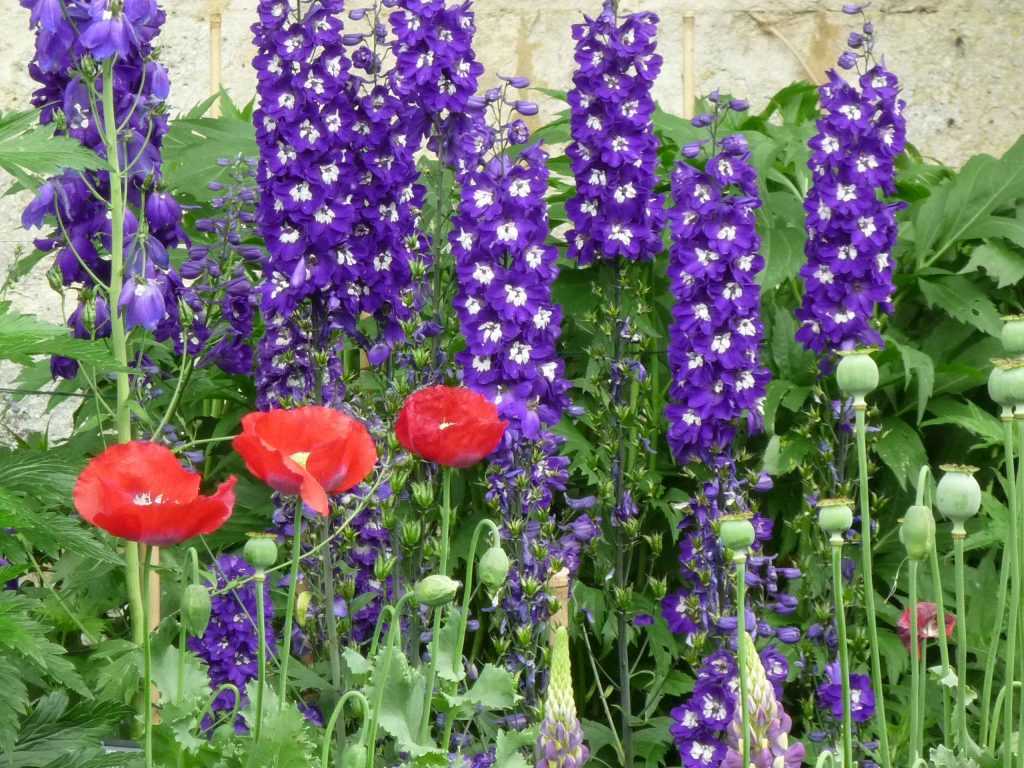
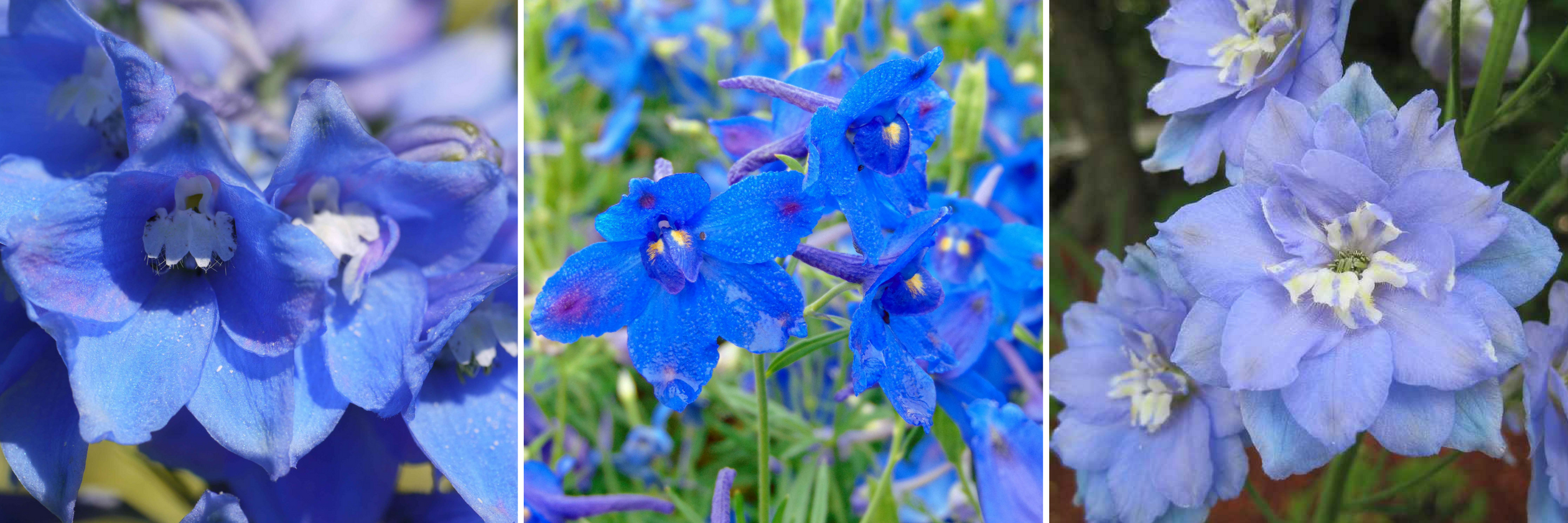


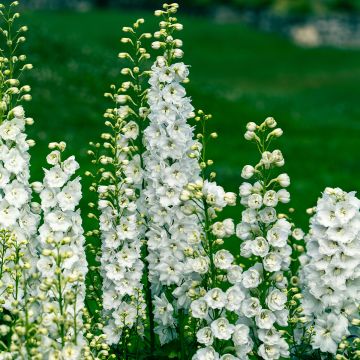


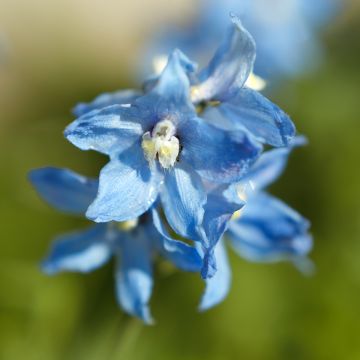
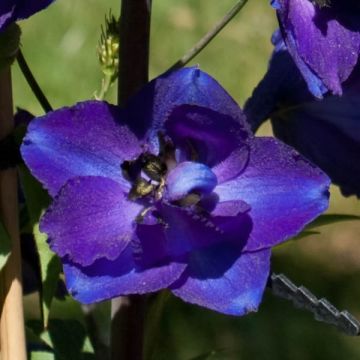
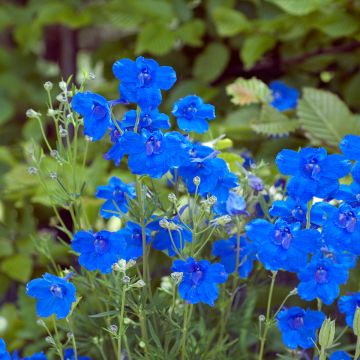
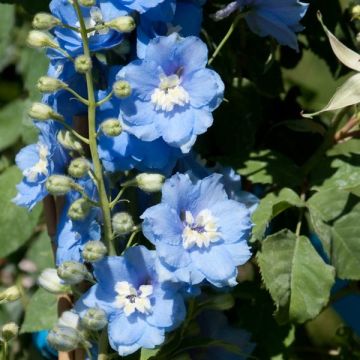


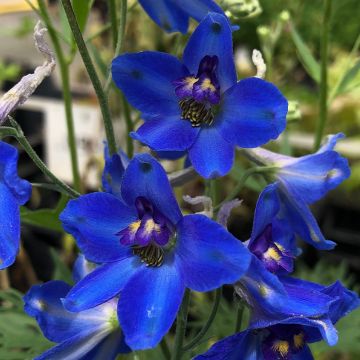



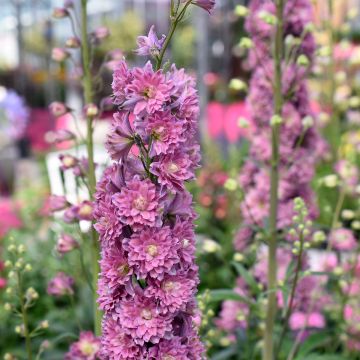
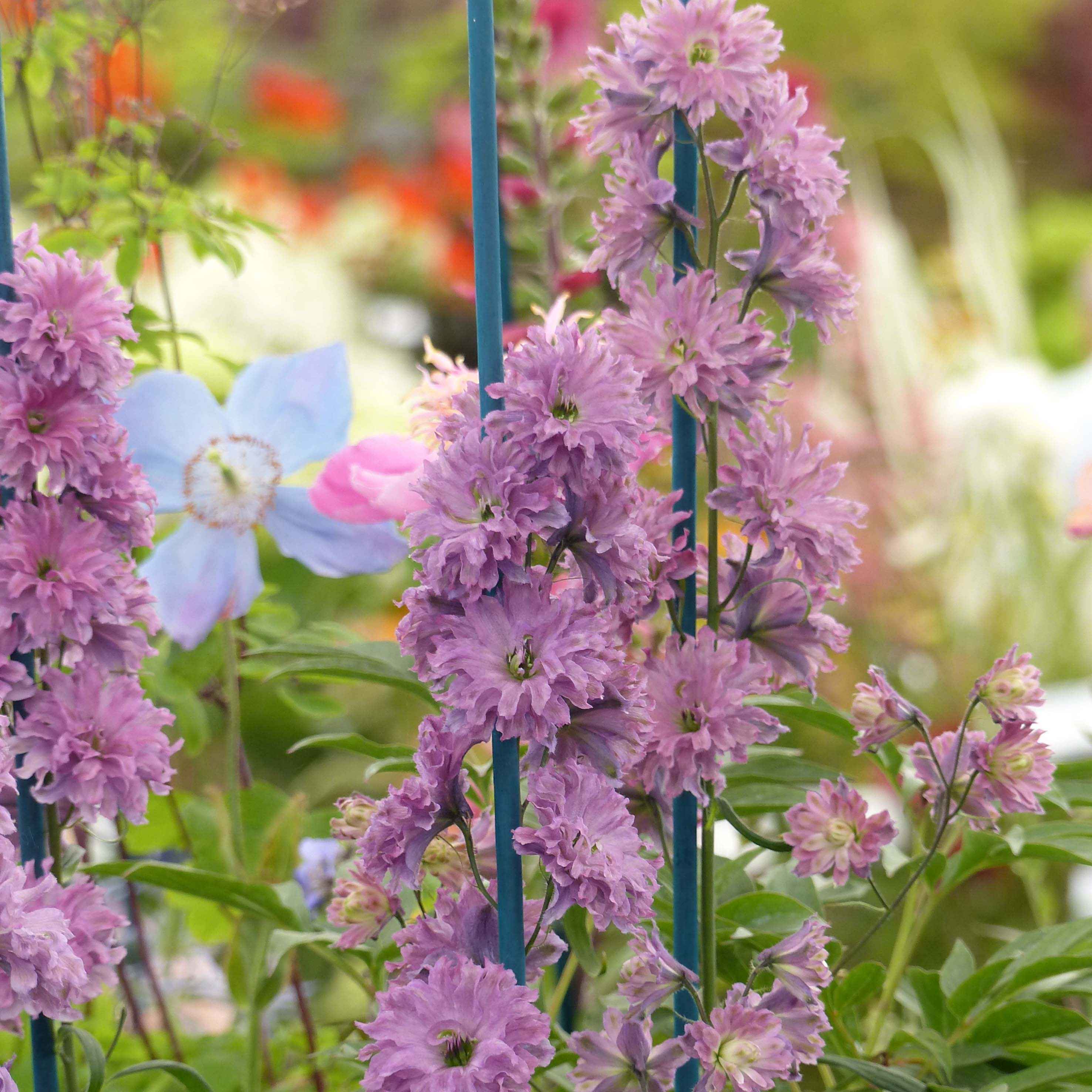
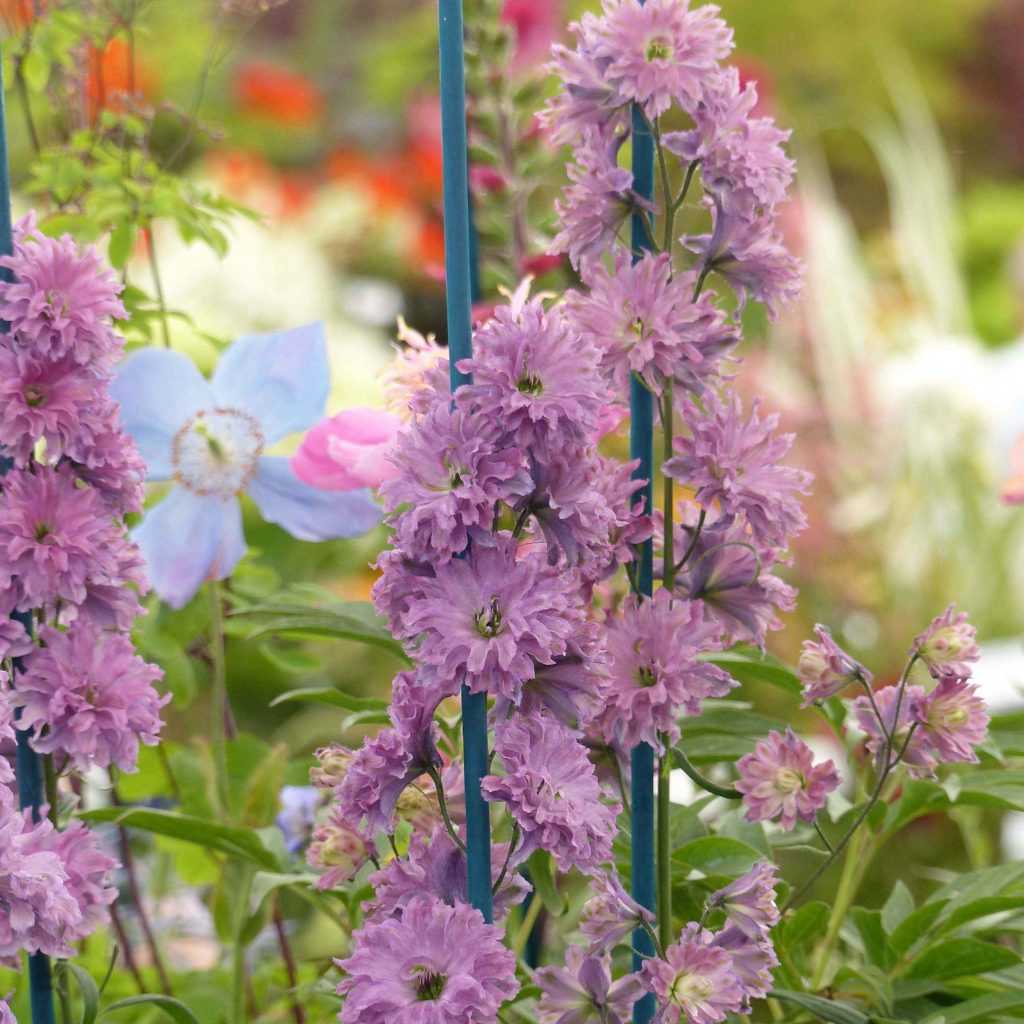
Comments